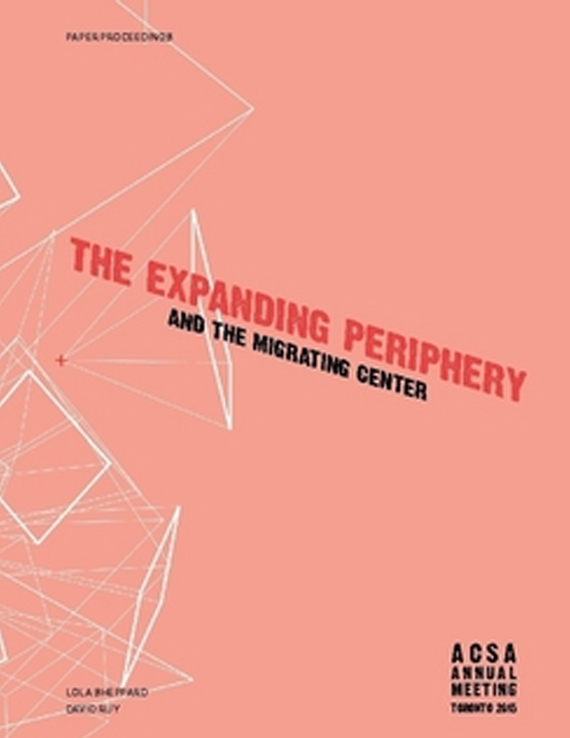Author(s): Daniel Adams
There is widespread recognition of natural resource depletion and its consequences, and designers are increasingly focusing analytical mappings and speculative investigations on these industrial processes. Resulting design propositions often employ techniques of collage to envision potential futures with programmatic pairings of industry and nature or industry and urbanism, new architectural shells for industry, or re-visions of inhabiting dramatically altered and scarred post-industrial landscapes. However, these imaginaria remain exterior to the actual processes and systems of industry rarely attempting to re-choreograph the fundamental operating practices of the industry itself. Under-lying this boundary is a seeming acceptance of industrial process as a medium outside the realm of design. This perception is reflective of the resources studied. The emphasis of focus on the depletion and damaging pursuit of increasingly scarce resources, namely petroleum, has cast industry as foreign and intrusive, guided by a purely internalized operating and logistical efficiency in which any particularities of context are negated. Design is relegated to a role of creatively negotiating industrial processes that are pre-determined.To expand the terrain of design for the industrialization of natural resources, this paper focuses on a second type of natural resource- resources of global abundance. Unlike petroleum, lithium, copper and other mined metals, materials such as timber, silica, and salt, have structured and will structure the evolution of humanity for thousands, not hundreds, of years. The industrialization of resources of great abundance does not subjugate local conditions, but rather choreographs with the environment to absorb efficiency. In this context, beyond responding to the impositions of industry, the role of analytical investigations and interpretation of environmental systems gains additional potential and agency for choreographing industrialization.The methodology of investigation in this paper is an analysis of the industrialization of a single abundant resource, salt, across varied geographic, climatic, economic, and cultural landscapes. In this study, the abundant material serves as a neutral base, against which to gauge the potential efficiencies that industrialization is able to absorb from variable and diverse environmental factors. These potentials are evidenced through the comparative investigation of case studies of four existing sites of salt harvesting. The case studies are productive landscapes that share nearly identical operations with chemically identical materials, but observation of industrial context, local climate, and social relationships surrounding the industry reveals a vast spectrum of inherited difference resulting from wildly varied absorbed efficiencies. Identification of these variables of inter-relation reveals a new space and palette of dimensions for design to choreograph between industrialization and natural resource.
Volume Editors
David Ruy & Lola Sheppard
ISBN
978-0-935502-95-4

 Study Architecture
Study Architecture  ProPEL
ProPEL 
